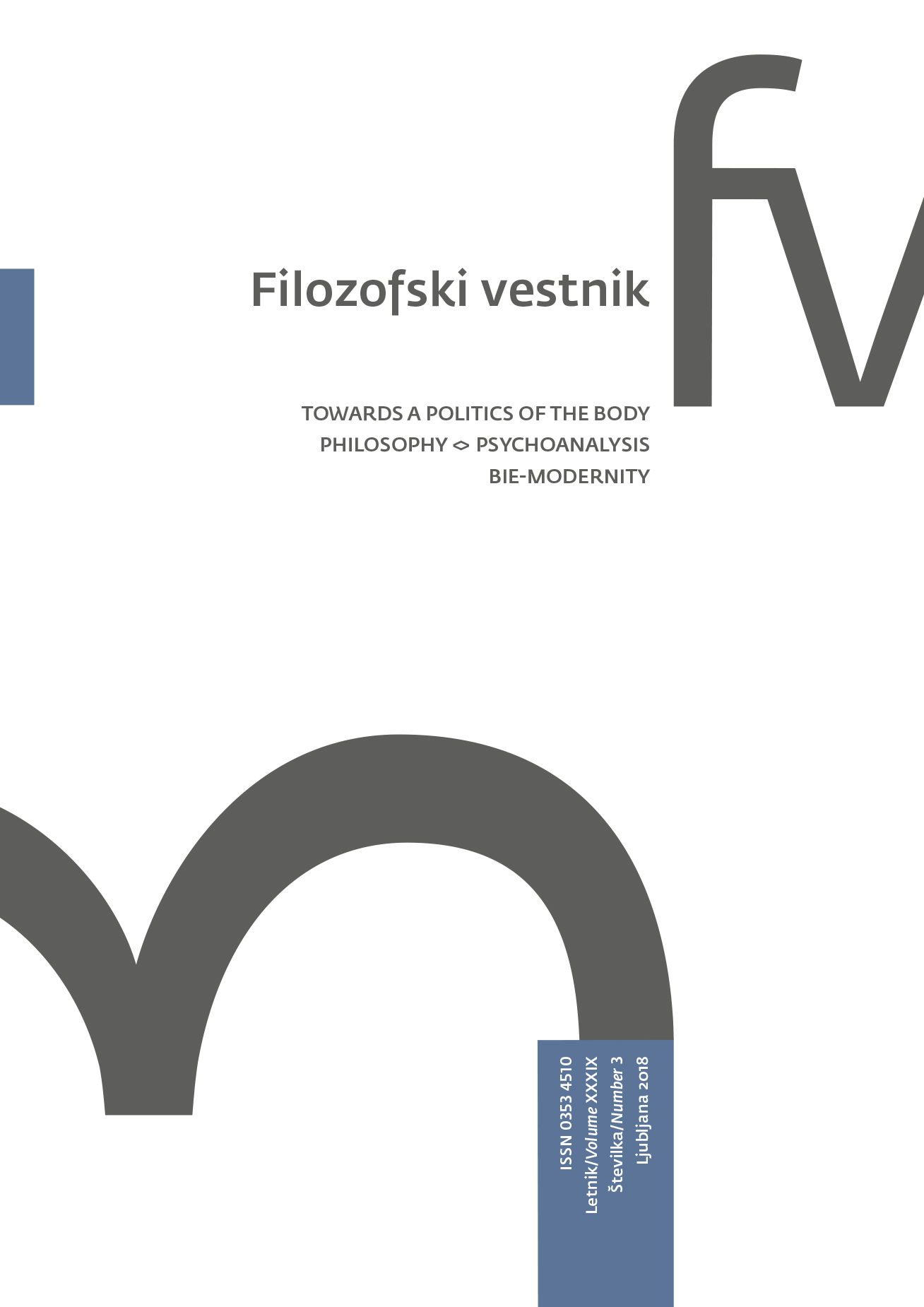The Glorious Body: Agambenian Non-Unaveilable Nudity in Art
Keywords:
mesijanski čas, golot, poiesis in praxis, forma-življenja, suverenostAbstract
“The Glorious Body” explores Agamben’s conception of art—through his notion of the messianic as it comprises “nudity” to infer his idea of the nude. Agamben’s “ontology of nudity” heals the fracture between poiesis and praxis that paved the dreary way to aesthetics, giving a key role in this process to the nude figure in art. Insofar as art may be rediscovered through “nudity,” art can awaken us to the intimate contact of poiesis and praxis in life itself, allowing us to reclaim our poetic status in the world by constituting our lives as “form-of-life.” Agamben’s messianic nudity (in art, through the nude), moreover, effects the inoperativity of sovereignty by precluding presupposition—that which a veil relies on—by simply italicizing what already exists. Sovereignty is thus disempowered, as it depends on the presupposition of an exception that Agamben’s messianic vision held within nudity rules out.
Downloads
Downloads
Published
How to Cite
Issue
Section
License
Authors guarantee that the work is their own original creation and does not infringe any statutory or common-law copyright or any proprietary right of any third party. In case of claims by third parties, authors commit their self to defend the interests of the publisher, and shall cover any potential costs.
More in: Submission chapter





